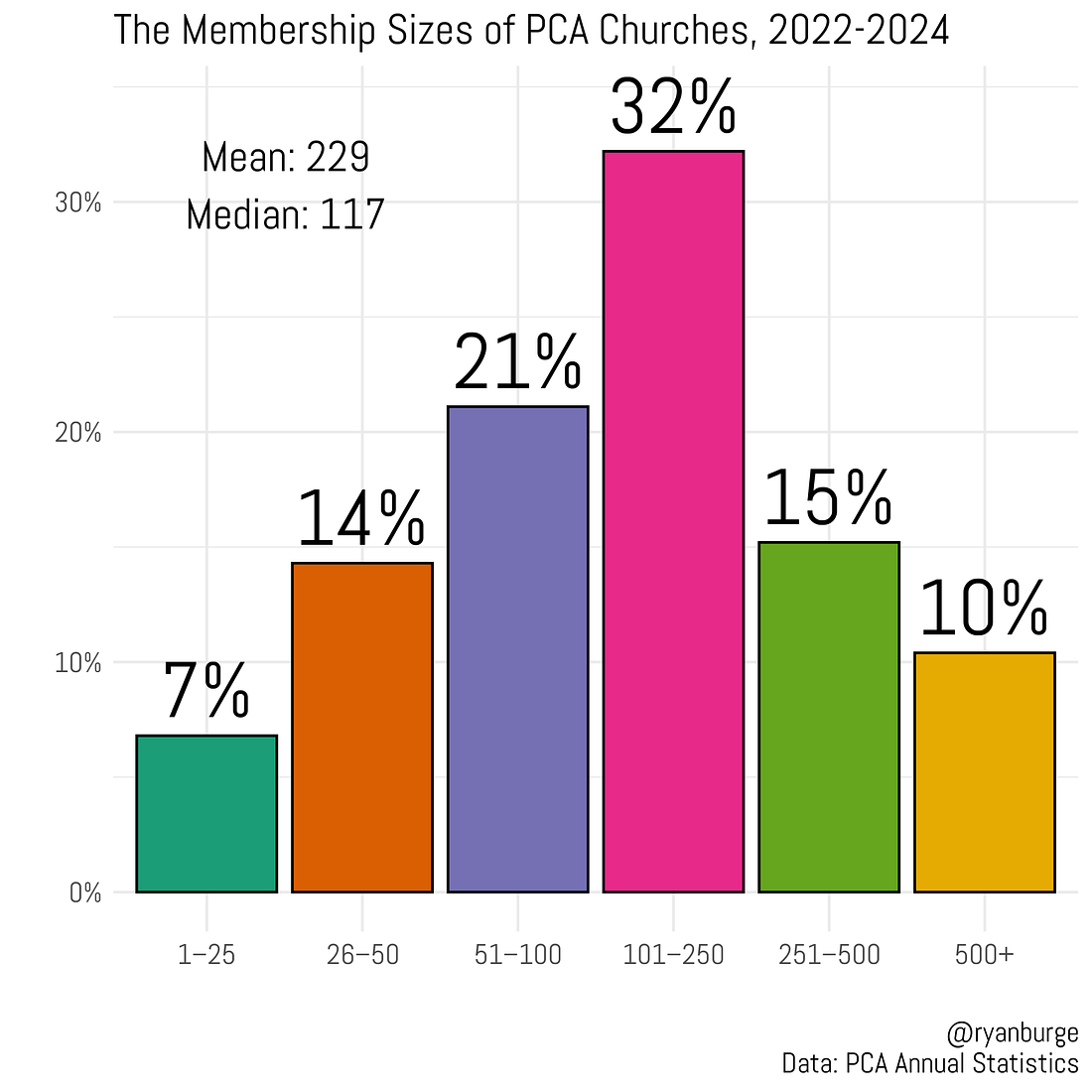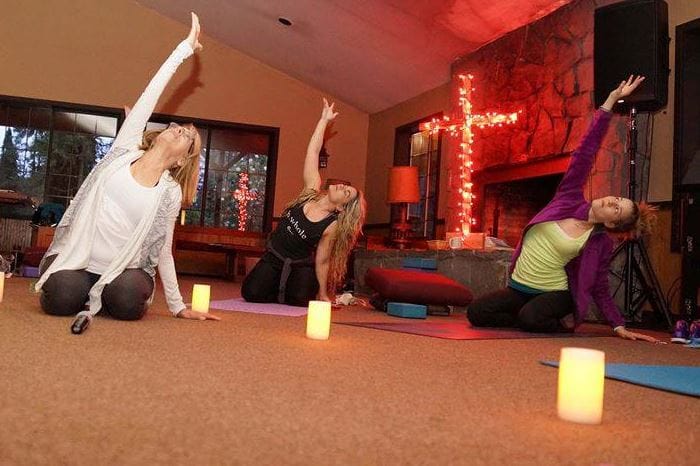At a time when other evangelical bodies are declining, the conservative Presbyterian Church in America (PCA) has maintained its membership and even shown some growth, which may be a result of the denomination’s retention of members through infant baptism. In his newsletter Graphs about Religion (July 31), Ryan Burge reports that the 400,000-member denomination, with less than 1,700 churches, is growing at a steady pace, adding 1.5 to 2 percent to its membership rolls each year. Burge analyzes PCA denominational statistics, specifically looking at church reports from 2022, 2023, or 2024. (The data reflected an unusually high compliance rate, with nearly 90 percent of all the churches in the database furnishing information in 2022 or later.) He found that roughly 75 percent of PCA churches have 250 or fewer members (not attenders), a distribution of church sizes that is close to the national average—“a few very small, a few very large, but a whole bunch in the middle of the range.” It is large churches that are driving growth in the denomination, with many in the other sizes staying relatively stagnant. “In fact, 42 percent of all the reporting churches say that they have lost more than 10 members or gained no more than 10 members,” Burge writes. “However, the silver lining is this: about the same percentage (41 percent) have reported a gain that is between 11 and 50 new members.”

He finds that once a church has a membership beyond 50, growth is much more likely than stagnation or decline. The robust baptism data from the PCA shows how the denomination has been able to retain membership, even if that retention is not spread evenly among the churches. While nearly half of PCA churches conducted less than 3 infant baptisms last year, 45 percent conducted at least a half dozen. Burge also calculated the total church income of each PCA congregation (which includes not only offerings but such sources as endowments and rental income). In eliminating the 1 percent of outliers, he found that for every additional member in a PCA church, the total income rises by about $3,500. As might be expected, larger churches have bigger income streams. Yet these large churches don’t always follow that pattern. “Some churches are membership rich and cash poor; others are in the exact opposite scenario.” For instance, First Presbyterian in Chattanooga, TN, reports 1,185 members with an income of $7.75 million, while Spanish River Presbyterian in Boca Raton, FL, has 1,314 members but only an income of $1.7 million.




